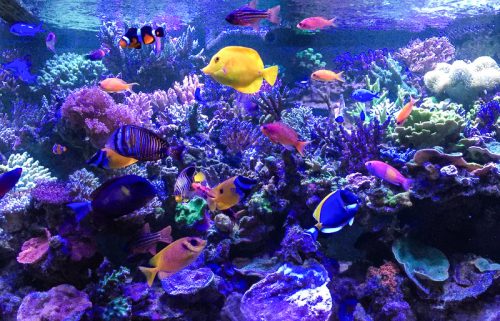Disclosure: In any review for a product or service, products or compensation may have been provided to me to help facilitate my review. All opinions are my own and honest. I am disclosing this in accordance with FTC Guidelines. Please see “Disclose” and "Terms of Use" tabs for more information.
A powerful, long-term study from WCS adds scientific backing for global calls for conserving 30 percent of the world’s ocean. The studied no-take marine protected areas (MPAs) increased the growth of fish populations by 42 percent when fishing was unsustainable in surrounding areas, achieving the benefits of stable and high production of fish populations for fishers, while protecting threatened ecosystems.
Findings support global “30 by 30” goal of protecting 30 percent of the ocean by 2030
· Study published in the journal Marine Policy shows a no-take marine protected area (MPA) in Kenya was able to compensate for overfishing by increasing and maintaining the growth rate of fish populations by 42% over 24 years
· Study compared two common fisheries management approaches – protected area closures and fishing gear restrictions
· Gear restrictions provided short-term benefits to fisheries, while no-take MPAs delivered and maintained better long-term fisheries production and yields
· This study is further evidence of the value of no-take MPAs to achieve benefits for fish, fishers, communities, and ecosystems
· WCS advocates for all-ocean management to achieve sustainable fisheries, and supports the global call to protect and conserve at least 30 percent of the global ocean by 2030: wcs.org/cbd

The study recorded fish catches for 24-years across a dozen fish landing sites within two counties in Kenya, which allowed scientists to evaluate the long-term impacts of two different fisheries management methods. While one county utilized a no-take MPA covering 30 percent of the fishery, the other focused on gear restrictions and prohibited the use of small-mesh nets.
The differences in outcomes for the fishers and the ecosystems were stark. Per-person daily catches rose 25 times faster near the no-take MPA than in fished areas with gear restrictions, showing that no-take MPAs were far more effective at sustaining stocks of fish than restricting destructive gear.
The study’s lead author Dr. Tim McClanahan, Senior Coral Reef Scientist for WCS said “The no-take area in Mombasa occupied 30 percent of the studied fishing grounds. Fortuitously, this is the target for protection being proposed for the oceans, which is rarely tested and based on the results of simulation models. The empirical support for the models and the conservation proposal is reassuring along with the unexpected results of increased production of fish populations that compensated for the lost fishing area. This adds to the evidence that no-take protected areas of sufficient coverage may compensate for the lost fishing grounds, particularly when fisheries are not sustainably fished.”
This new study from WCS represents the longest-ever continuous detailed fish catch record for coral reefs, and reveals patterns that took nearly 20 years to unfold due to the small annual increments of change. The time and resources it takes to complete these empirical studies has long been an impediment to testing the effectiveness of no-take MPAs on fisheries, and is also why simulation models were commonly used. Until this publication, most existing empirical studies were short-term and focused on the catch per fisher rather than the catch per area, which is a critical metric of sustainable yield estimates. Consequently, there is a compelling need to expand long-term studies to better calibrate and test fisheries production models.
This study shows that MPAs where no-take rules are followed can compensate for lost fishing grounds and stocks and therefore help people highly dependent on fish for income and nutritional security that is lost when catches are unsustainable. While gear restrictions did have positive benefits for short periods of time, they did not maximize fisheries production over the long-term. Some combination of closure and gear restrictions are therefore likely needed to achieve the full benefits to both fishers and ecosystems.
















Speak Your Mind
You must be logged in to post a comment.